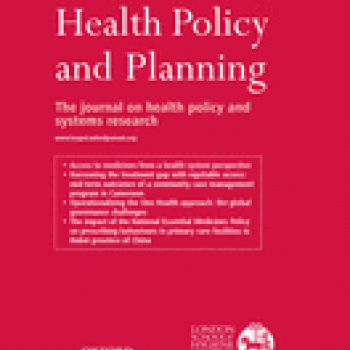
Background: Private health care services were officially recognized in Vietnam in 1989, and for the last 15 years have competed with the public health system in providing primary curative care and pharmaceutical sales to rural populations. However, the quality of these private and public health care services has not been evaluated and compared.
Methods: A community-based survey was conducted in 30 of the 160 communes in Hung Yen, which were selected by probability proportional to population size PPS) sampling. All commune health centres (CHCs) and private health care providers in the selected communes were surveyed on human resources, services provided, availability of medical equipment and pharmaceuticals, knowledge and clinical performance for acute and chronic problems. Patient satisfaction and cost of care associated with recent illness were measured using a random household survey covering 30 households from each of the selected communes.
Results: There were 11.5 private providers per 10 000 population, compared with 6.7 public providers per 10 000. A quarter of private providers were employees of the public health sector. Less than 20% of the private providers had registered their practice with the government system. Eleven per cent (26/234) had no professional qualifications. Fifty-eight per cent (135/234) provided treatment as well as selling medications. Public sector infrastructure was superior to that of the private providers. The quality of services provided by public providers was poor but significantly better than that of private providers. Patient satisfaction and costs of care were similar between the two groups.
Conclusions: Private providers are successfully competing with the public health centre system in rural areas but not because they provide cheaper or better services. The quality of private health care services is not controlled and is significantly poorer than public services. Current practice in both systems falls below the national standard, especially for the management of chronic health problems. The low quality of health care services at a community level may help explain the previously observed phenomena of high levels of self-medicating, low utilization of commune health centres and overutilization of tertiary health care facilities.
Keywords: quality of care, private providers, public providers, rural, Vietnam
The full published version of the article is available on the journal website.

Background: Private health care services were officially recognized in Vietnam in 1989, and for the last 15 years have competed with the public health system in providing primary curative care and pharmaceutical sales to rural populations. However, the quality of these private and public health care services has not been evaluated and compared.
Methods: A community-based survey was conducted in 30 of the 160 communes in Hung Yen, which were selected by probability proportional to population size PPS) sampling. All commune health centres (CHCs) and private health care providers in the selected communes were surveyed on human resources, services provided, availability of medical equipment and pharmaceuticals, knowledge and clinical performance for acute and chronic problems. Patient satisfaction and cost of care associated with recent illness were measured using a random household survey covering 30 households from each of the selected communes.
Results: There were 11.5 private providers per 10 000 population, compared with 6.7 public providers per 10 000. A quarter of private providers were employees of the public health sector. Less than 20% of the private providers had registered their practice with the government system. Eleven per cent (26/234) had no professional qualifications. Fifty-eight per cent (135/234) provided treatment as well as selling medications. Public sector infrastructure was superior to that of the private providers. The quality of services provided by public providers was poor but significantly better than that of private providers. Patient satisfaction and costs of care were similar between the two groups.
Conclusions: Private providers are successfully competing with the public health centre system in rural areas but not because they provide cheaper or better services. The quality of private health care services is not controlled and is significantly poorer than public services. Current practice in both systems falls below the national standard, especially for the management of chronic health problems. The low quality of health care services at a community level may help explain the previously observed phenomena of high levels of self-medicating, low utilization of commune health centres and overutilization of tertiary health care facilities.
Keywords: quality of care, private providers, public providers, rural, Vietnam
The full published version of the article is available on the journal website.

